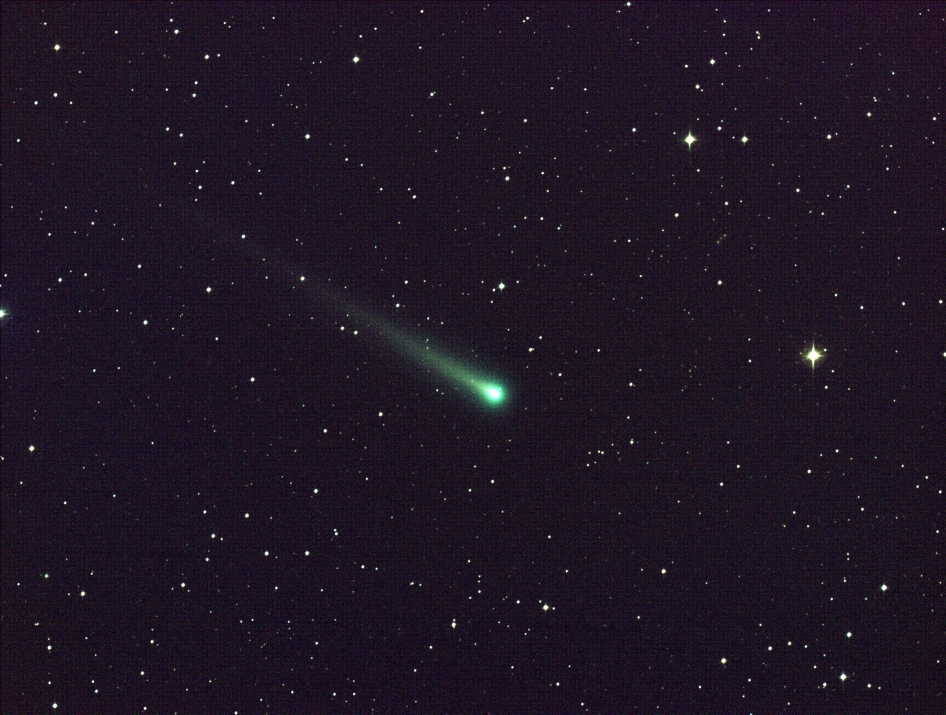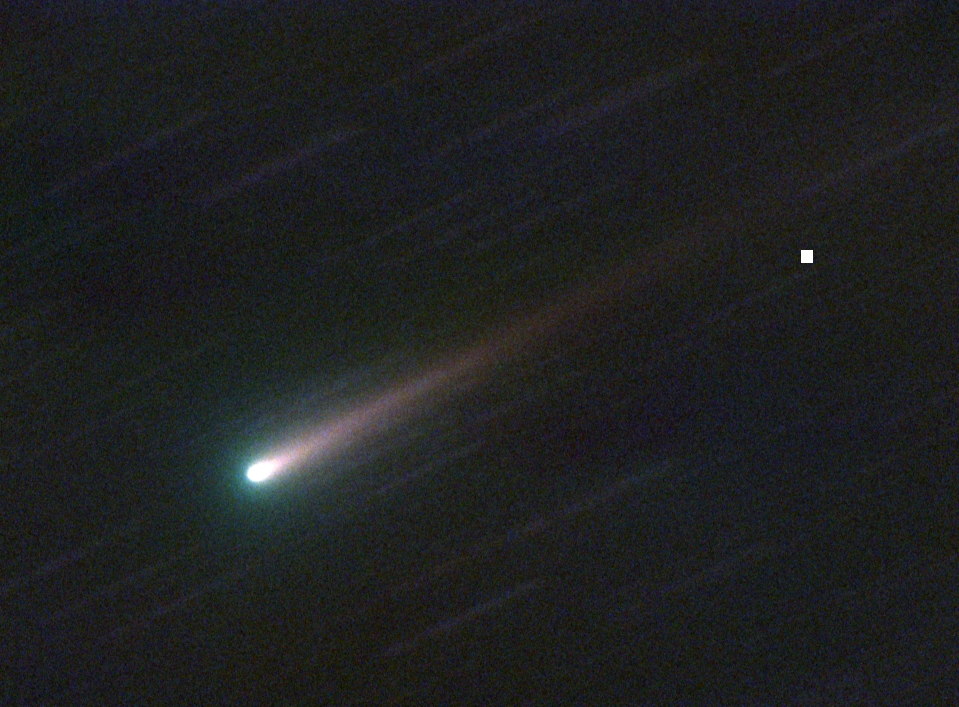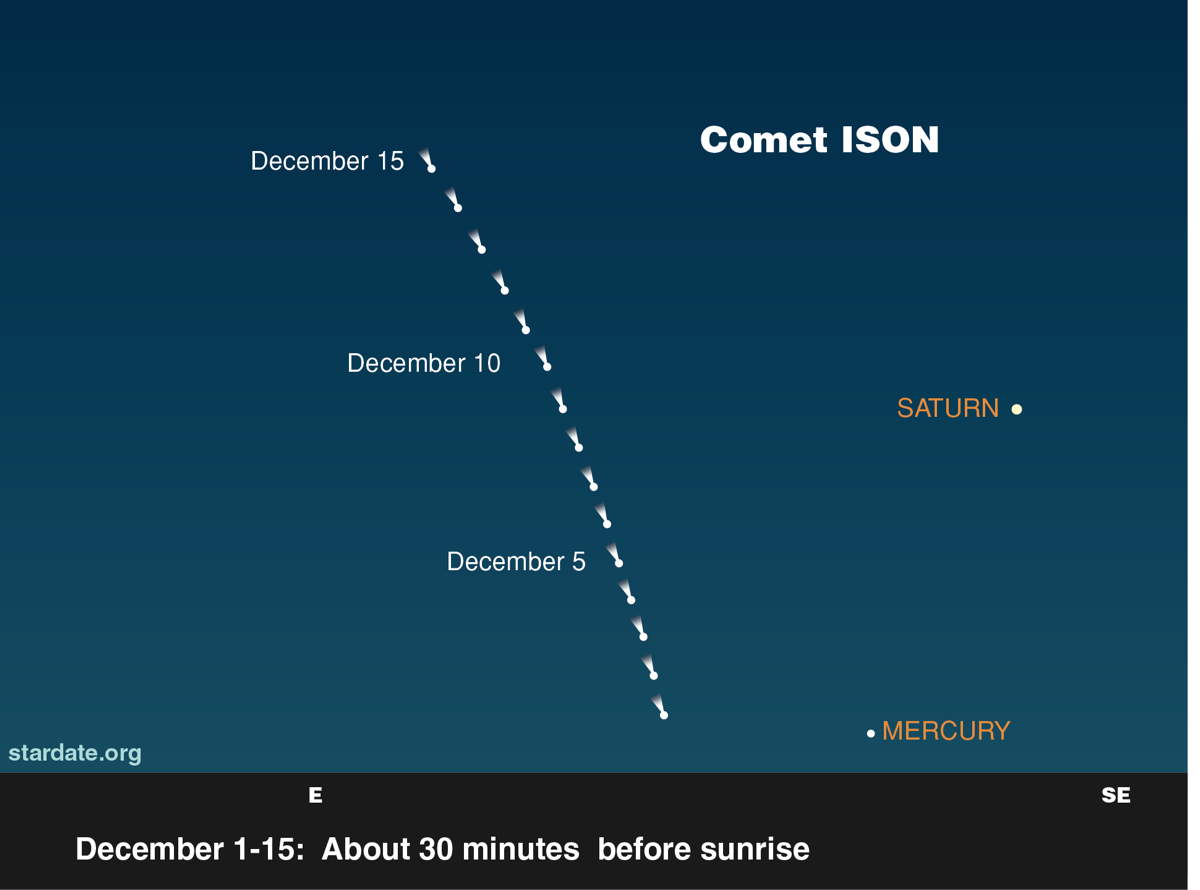
Comet ISON's highly anticipated flyby of the sun is now just two weeks away, and scientists and skywatchers alike hope the encounter gives them another reason to be thankful this holiday season.
Comet ISON will skim just 730,000 miles (1.2 million kilometers) above the solar surface on Thanksgiving Day (Nov. 28) before heading out into deep space once again. If ISON survives this perilous plunge, the icy wanderer could put on quite a show in the ensuing weeks, becoming visible to the naked eye throughout much of December, experts say.
ISON was discovered by two Russian amateur astronomers in September 2012, giving scientists more than a year to gear up for its dramatic brush with the sun. Researchers have tracked the comet assiduously, training a number of ground- and space-based instruments on ISON as it barrels through the inner solar system. [Potentially Dazzling Comet ISON: 8 Essential Facts]
This NASA-organized Comet ISON Observation Campaign (CIOC) aims to gain a better understanding of ISON's composition, by noting which gases boil off the object at various distances from the sun.
"Another interesting facet of Comet ISON is that it appears to be a dynamically new comet, fresh from the Oort Cloud," CIOC officials write on the campaign's website. "This means it has probably never been through our solar system, and has never been subjected to the melting effects of solar radiation. It's a truly pristine example of early solar system material, and thus we are particularly eager to see the combined result of a 'raw' piece of solar system material being subjected to the sun's outer atmosphere!"


Nobody knows exactly what will happen during ISON's close solar encounter; it's tough to predict the behavior of any comet, especially dynamically new ones such as ISON, whose core is thought to be between 0.12 miles and 1.2 miles (0.2 to 2 kilometers) wide.
However, some scientists have voiced optimism that the object won't break apart, provided it has the density and rotational characteristics of a "typical" comet.
Get the Space.com Newsletter
Breaking space news, the latest updates on rocket launches, skywatching events and more!
You don't have to wait until Thanksgiving to look for Comet ISON. The icy wanderer is visible in binoculars right now, streaking low in the predawn sky through the constellation Virgo. If you're interesting in buying binoculars or a telescope to search for ISON, check out SPACE.com skywatching columnist Joe Rao's advice here.
Editor's note: If you snap an amazing photo of Comet ISON or any other celestial sight that you'd like to share for a possible story or image gallery, please contact managing editor Tariq Malik at spacephotos@space.com.
Follow Mike Wall on Twitter @michaeldwall and Google+. Follow us @Spacedotcom, Facebook or Google+. Originally published on SPACE.com.
Join our Space Forums to keep talking space on the latest missions, night sky and more! And if you have a news tip, correction or comment, let us know at: community@space.com.

Michael Wall is a Senior Space Writer with Space.com and joined the team in 2010. He primarily covers exoplanets, spaceflight and military space, but has been known to dabble in the space art beat. His book about the search for alien life, "Out There," was published on Nov. 13, 2018. Before becoming a science writer, Michael worked as a herpetologist and wildlife biologist. He has a Ph.D. in evolutionary biology from the University of Sydney, Australia, a bachelor's degree from the University of Arizona, and a graduate certificate in science writing from the University of California, Santa Cruz. To find out what his latest project is, you can follow Michael on Twitter.









